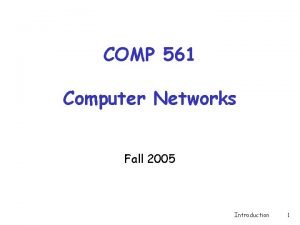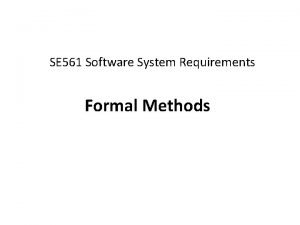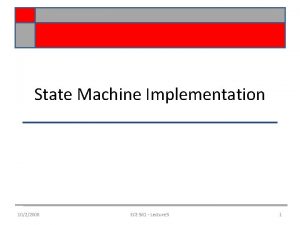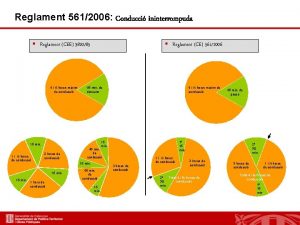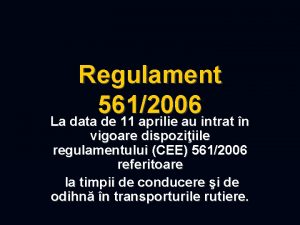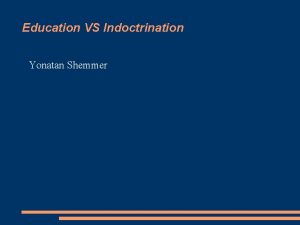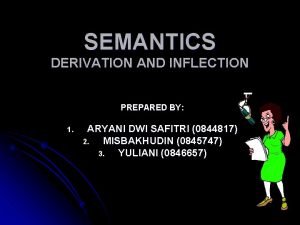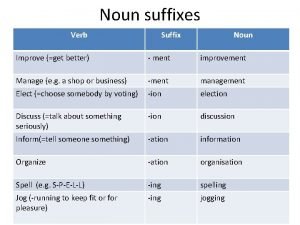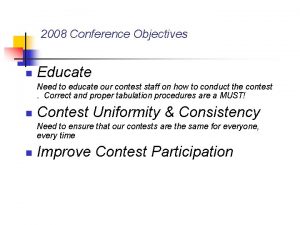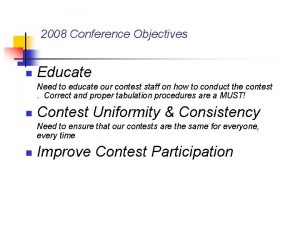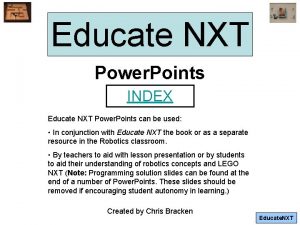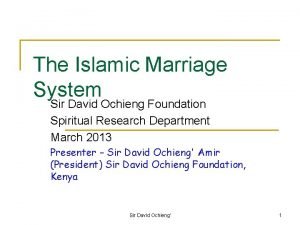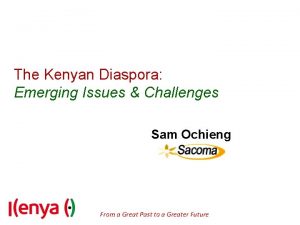Educate the Girl Child COMSTRAT 561 Consolata Ochieng





















- Slides: 21

Educate the Girl Child COMSTRAT 561 Consolata Ochieng’

1 About the cause

Educate the girl child About the cause This cause has been inspired by an African proverb that states, “If you educate a man, you educate an individual but if you educate a woman, you educate a nation. ” Lack of proper education plays a vital role in contributing to global poverty through generations. Improving the lives of children in developing countries through education helps empower women and girls, foster peace, and improve health, economic growth, and income.

Facebook Page According to UNESCO, EFA GMR report (July 2012), “If all students in lowincome countries left school with basic reading skills 171 million people could be lifted out of poverty. This is equal to a 12% cut in global poverty. ”

2 Message Factors: Fear Appeal Self-efficacy

Fear Appeal “Disgust can provide a positive, persuasionenhancing boost to appeals that are solely fear based” Morales, Wu, & Fitzsimons (2012) acknowledge through research that whereas fear causes people to initially freeze in uncertainty before engaging in avoidance activities, disgust impels them to immediately undertake distancing behaviors.

Fear Appeal

Self-efficacy O'Keefe (2002) expresses that the more specific descriptions of the recommended action enhance the receiver’s behavioral self –efficacy (perceived behavioral control).

Self-efficacy

3 Receiver and Context Factors: Inoculation Message Factors

Inoculation “to foster resistance to influence in any number of contexts where people possess attitudes that are likely to be challenged” (Szabo & Pfau, 2002)

Inoculation

4 Elaboration Likelihood Model Central Processing Message Factors

Elaboration Likelihood Model If the motivation and ability to elaborate is high, central processing of the message will occur; a person will carefully scrutinize the merits of the message (Booth-Butterfield, S. and Welbourne, J. (2002).

Central Processing

5 Cognitive Dissonance Message Factors

Cognitive Dissonance refers the discomfort produced from having conflicting beliefs leading to alteration in ones attitude to reduce the discomfort. According to Harmon-Jones (2002), in the induced compliance paradigm it is assumed that dissonance is aroused when a person does or says something that is contrary to a prior belief or attitude

Cognitive Dissonance

? But wait… There’s More!

#Let Girls Learn

References Morales, A. C. , Wu, E. C. , & Fitzsimons, G. J. (2012). How disgust enhances the effectiveness of fear appeals. Journal of Marketing Research. O'Keefe, D. J. (2002). Message Factors. Persuasion: Theory & Research (2 nd ed. , pp. 215 -240). Thousand Oaks, CA: Sage Publications. Szabo, E. A. , & Pfau, M. (2002). Nuances in inoculation: Theory and applications. In J. P. Booth-Butterfield, S. & Welbourne, J. (2002). The elaboration likelihood model: Its impact on persuasion theory and research. J. P. Dillard & M. Pfau (eds. ), The Persuasion Handbook: Developments in Theory and Practice. Thousand Oaks, CA: SAGE Publications. Thank You Harmon-Jones, E. (2002). A Cognitive Dissonance Theory Perspective on Persuasion. In J. P. Dillard & M. Pfau (eds. ), The Persuasion Handbook: Developments in Theory and Practice. Thousand Oaks, CA: Sage Publications UNESCO, EFA GMR report (July 2012) USAID #Let Girls Learn
 Rachele piange i suoi figli e non vuole essere consolata
Rachele piange i suoi figli e non vuole essere consolata It takes a whole village to educate a child
It takes a whole village to educate a child It takes the whole village to educate a child
It takes the whole village to educate a child Once upon a time there is a girl
Once upon a time there is a girl Stone girl bone girl
Stone girl bone girl Girl and boy xxxx
Girl and boy xxxx Comp 561
Comp 561 Uspmilano
Uspmilano Se 561
Se 561 Ece 561
Ece 561 Ece 561
Ece 561 Reglament 561
Reglament 561 Regulamentul 561 timpi de conducere
Regulamentul 561 timpi de conducere Educate empower evolve
Educate empower evolve Yonatan shemmer
Yonatan shemmer Explain the social impact of ict
Explain the social impact of ict Educate your desires
Educate your desires Essential services
Essential services Belmayne etns
Belmayne etns Past particple of drink
Past particple of drink Kilcolgan educate together
Kilcolgan educate together Form adjectives from the following nouns
Form adjectives from the following nouns






